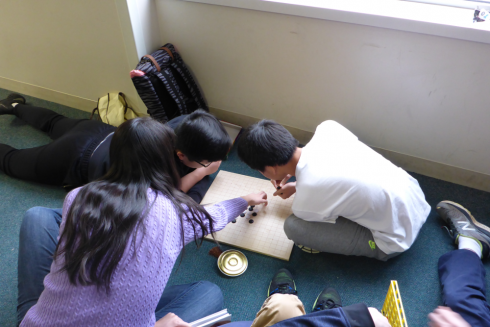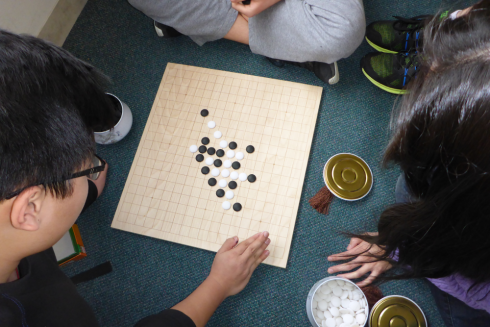
I recently discovered that, although they may look it, Go boards are not necessarily square. They’re slightly longer in one dimension so that the board looks more square to the players on both sides.
A student asked me to make one for him–he’d ordered a set recently and didn’t like the board it came with–so, I wrote a small python program to generate the Go grid, then lasered it onto a nice piece of sanded plywood.
It worked out quite well. Apparently the plywood makes just the right “thunk” sound when you put down the pieces.

The script to generate the grid.
go_board_2.py
from visual import *
from svgInator_3 import *
length = 424.2 #mm
width = 454.5 #mm
nLines = 19
dx = length/(nLines-1)
dy = width/(nLines-1)
print "Lenght = ", length
print "dx = ", dx
f = svgInator("go_board.svg")
lineStyle = {"stroke": "#000", "stroke-width": "2pt",}
#lines
for i in range(nLines):
x = i * dx
y = i * dy
#vertical
f.line(pos=[vector(x,0), vector(x,width)], style=lineStyle)
#horizontal
f.line(pos=[vector(0,y), vector(length,y)], style=lineStyle)
#circles
grid_pos = [(3,3), (3,9), (3,15),
(9,3), (9,9), (9,15),
(15,3), (15,9), (15,15)]
for i in grid_pos:
(x, y) = (i[0]*dx, i[1]*dy)
f.circle(pos=vector(x,y), radius=2.0,
style={"stroke": "#000", "fill":"#000"})
#bounding box
f.rect(dim=vector(length,width), style=lineStyle)
f.close()
Now I just have to learn to play.